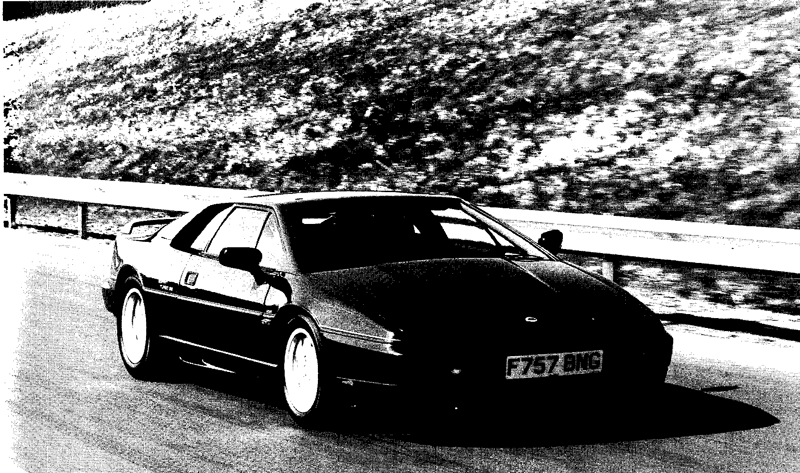The Esprit SE on the Track

Considering the mid-engine racing heritage that is such an obvious part of Lotus’s his-tory, keener owners of the Esprit may well ask why it has not become a racing certainty? The brief answer is that the Esprit was conceived as a road car — without the parallel racing programme characterized by the Europa and Type 47 — and the Esprit did not easily fit into any racing category. In fact, it took until the advent of the Turbo SE and the interest of American Pure Sports racing team entrepreneur/driver Doc Bundy to bring the Esprit the kind of track success you would expect of a genuine Lotus. Earlier Esprit sorties had been privately funded British affairs from Elan stalwart Richard Jenvey (2 litres, normally-aspirated) and Pete Hall/Andy Rouse Engineering, who campaigned the Esprit Turbo of 1982 in a production-based formula. As a pure racing 2-litre, the Esprit was not reliable enough to capitalize on its reasonable qualifying abilities against factory-funded Porsches in the 1979 World Championship of Makes. As a 1982 production racer, it was handicapped by its roadgoing weight and the inboard rear disc brakes, which tended to overheat in British sprint events.
DREAM DEBUT
The answer proved to be the 1990 Sports Car Club of America (SCCA) Escort World Challenge. This series caters for modified production sports cars in events from 45 minutes to 24 hours. The Lotus Esprit SE was prepared by an Anglo-American effort in less than six weeks. It scored a dream debut win in California at the Sears Point Three Hours (driv-ers: Doc Bundy and Scott Lagasse). It always showed speed enough to lead the Corvettes thereafter, and had won four of eight events at the close of 1990; the racing statistics will be found in our separate panel. In one of the events that eluded an Esprit
victory, Bundy bundled into the undergrowth. That incident prompted the thought that more cars were needed in 1991, but on this occasion, a complete re-build ensured that only three Esprits were prepared and shipped from Hethel in 1990. The racing Esprit was so well received that the American arm of Lotus marketed twenty ‘World Challenge Race Car Replicas’ at the end of the season. All were street legal, and safety and emissions equipment unchanged. Many features were shared with the racing version discussed in this section.
